This should be true for any cable length and any wavelength.
No, this is not true for any wavelength. At low frequencies (as in telephony/audio) the characteristic impedance is dominated by R and C: -
It approximates to \$\sqrt{\frac{R}{jwc}}\$ i.e. complex
At dc it is \$\sqrt{\frac{R}{G}}\$ i.e. resistive
And at RF frequencies it is \$\sqrt{\frac{jwL}{jwC}} = \sqrt{\frac{L}{C}}\$ i.e. resistive
However, in a typical datasheet of any coaxial cable the capacitance
of the cable per unit length is usually given. I don't understand the
effect of this capacitance on the input impedance.
Data sheets do tend to give the capacitance per unit length (without mentioning L/m) and if you know the characteristic impedance you can calculate what L per metre is: -
\${Z_o}^2 = \frac{L}{C}\$ therefore \$L= C\times{Z_o}^2\$ = 100\$e^{-12}\times 50\times 50 = 0.25\$ uH per metre.
What would be the input impedance?
The input impedance of RG-58 at RF frequencies will be 50\$\Omega\$ resistive because there are inductive and capacitive components that are in ratio as per the formulas above. This assumes you are correctly terminating the cable in 50\$\Omega\$
EDIT This is about where the turning points are between audio (complex) impedances and HF resistive impedances. For a start, here is a good spec for RG-58. Below are the salient points: -

Notice the bottom two data highlighted in red - this is the inner and outer DC resistance per 1000ft - a total of 54\$\Omega\$ per 1000ft loop (304.8m). This equates to 0.1772\$\Omega\$ per metre.
For |jwL| to equal 0.1772, the frequency will be \$\frac{0.1772}{2\Pi L}\$ and if L = 0.25uH then F = 113kHz. Ten times higher in frequency (1.13MHz) and Zo pretty much approximates to \$\sqrt{\frac{L}{C}}\$ i.e. is 50\$\Omega\$ resistive.
For higher frequencies, Zo is a reliable resistive quantity, for frequencies down between 10kHz and 1MHz it's a mish-mash and at audio frequencies below 10kHz it becomes what is telephonically known as a "complex impedance" where the impedance is largely determined by series resistance and parallel capacitance and the impedance phase angle is about 45º because \$\sqrt{-j}\$ is 45 degrees.


